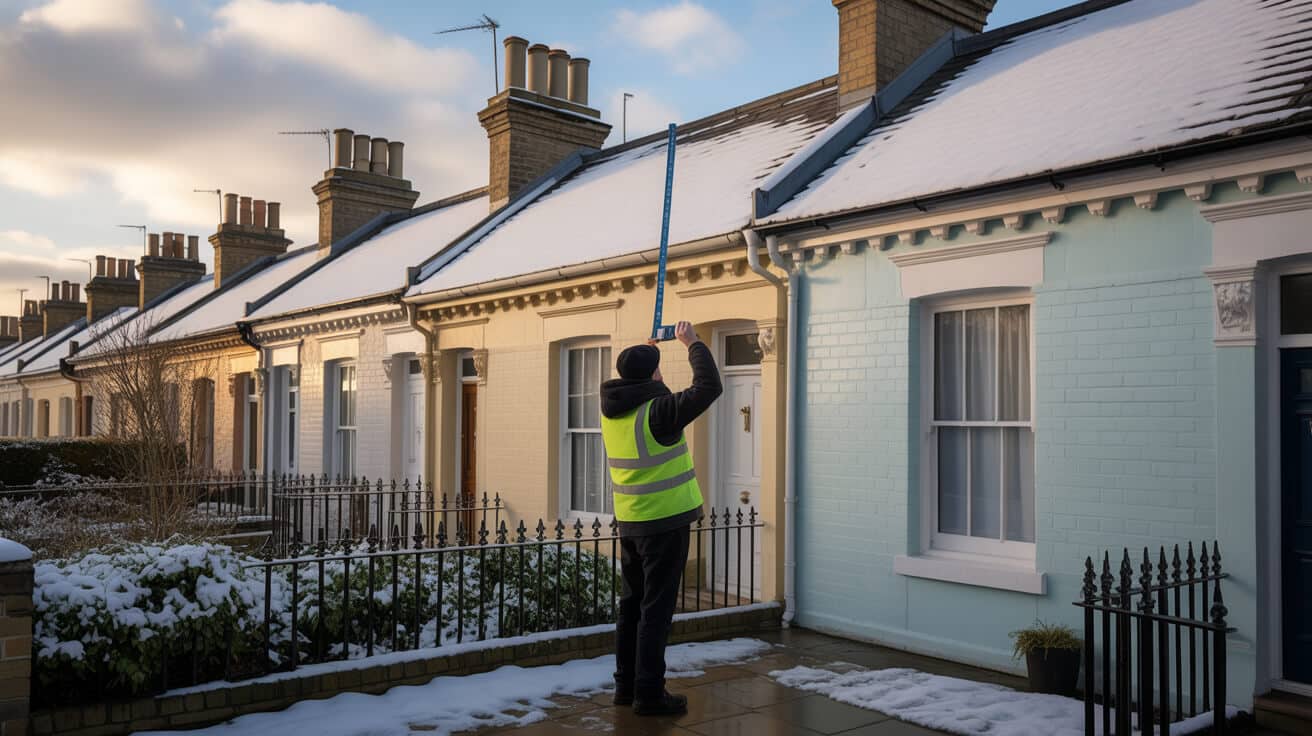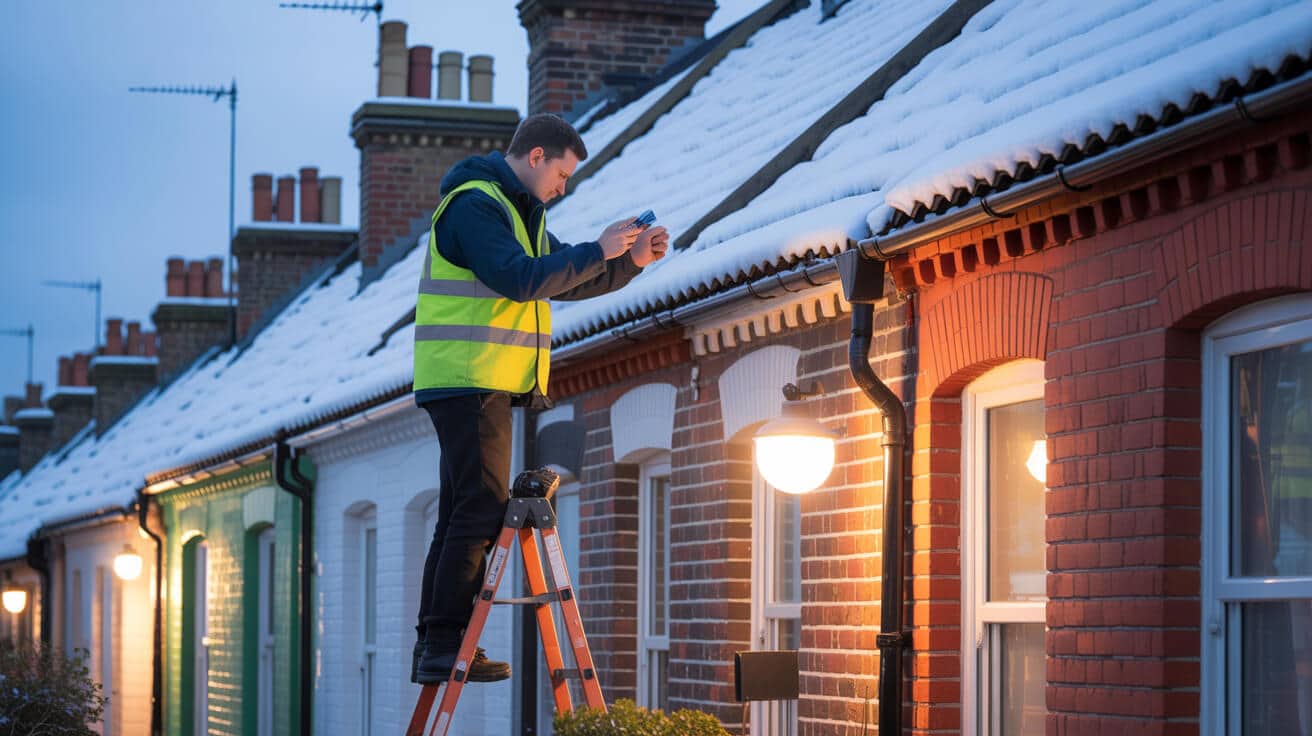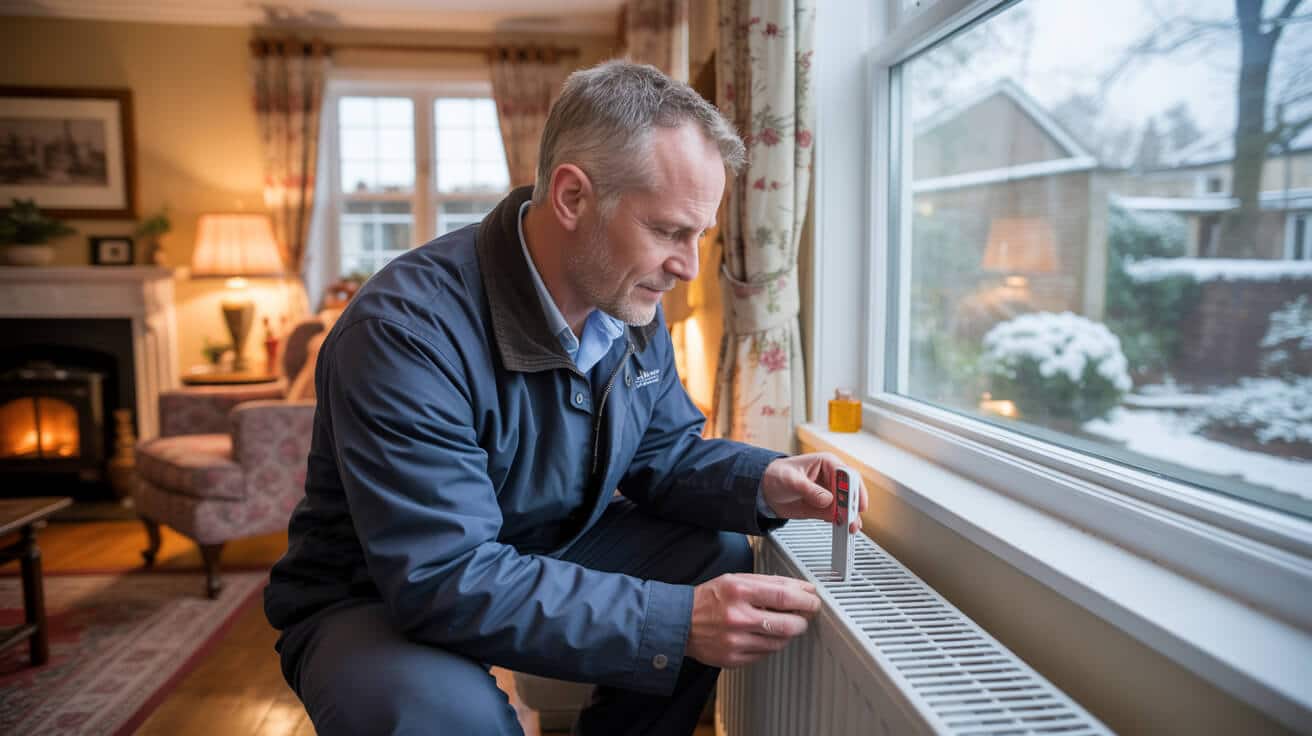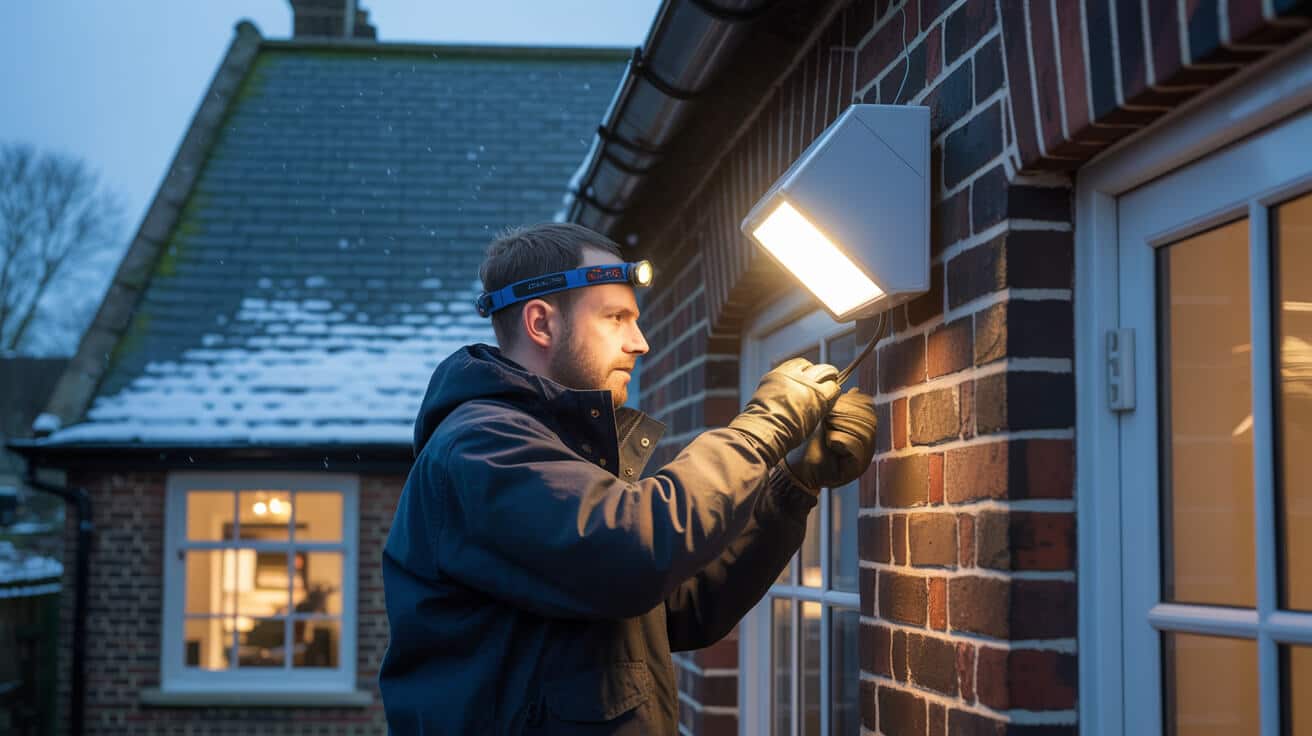 How To Prepare Your Property For Autumn And Winter
How To Prepare Your Property For Autumn And Winter

How Does Autumn Preparation Turn Tiny Faults Into Peace of Mind (Instead of Major Bills)?
Every autumn, small faults compound under the surface—leaky gutters, unnoticed patches of damp, a radiator that hisses instead of heating—until one freezing night turns them into a real headache. The result isn’t just discomfort; it’s urgent bills, angry tenants, and a scramble for scarce winter contractors. But the storey can run differently. Owners who get ahead of the season don’t just dodge disasters—they lock in comfort, compliance, and savings when it matters most.
You don’t see the damage from neglect until the leak reaches your wallet.
What separates those who glide through winter from those stuck in repair chaos? It’s disciplined, early action—identifying property weak points before weather and time team up to make problems worse. That’s what All Services 4U does for your portfolio: turn blind spots into confidence by catching risks you can’t see and eliminating them before the cold bites.
Where Do Most Autumn and Winter Property Disasters Start?

It’s not storms or obvious cold that causes most trouble—it’s neglected details. Most costly winter emergencies begin months earlier in the shadows: a slipped roof tile, a hairline crack in render, the gutter you meant to clear after the last windy day. Statistics don’t lie: over 70% of cold-season insurance claims stem from preventable leaks, burst pipes, and heating failures (Energy Saving Trust, 2024).
The Silent Triggers You Can’t Afford to Ignore
- Blocked Gutters and Downpipes: quietly channel water straight into walls, lofts, and insulation—causing rot and rapid heat loss.
- Flat Roofs and Dormers: trap leaves, creating pools that turn small cracks into costly leaks.
- Exterior Cracks and Worn Seals: on windows or render let in chill, damp, and mould triggers which spiral once temperatures dip.
- Unlagged Loft or Outbuilding Pipes: are on borrowed time the second the temperature drops; a single hard frost is all it takes.
- Unserviced Boilers and Radiators: let wear and limescale creep up so subtle failures become system breakdowns just when you need heat most.
The most expensive winter problems are the quiet ones that start building for months before a visible sign shows.
All Services 4U starts every seasonal prep by hunting these silent saboteurs. Years of hands-on repair experience have taught us: ignore the small things, and you end up paying for them twice—once in disruption, again in avoidable cost.
What’s the Fastest Way to Identify Your High-Risk Areas Before Cold Weather Hits?

You don’t need gimmicks or endless checklists to future-proof your building. You need laser focus on the pressure points: where water, heat, and exposure can do the most harm. National Energy Foundation research and property management leaders all agree: target the same key zones, you catch 80% of trouble before winter emergencies take over.
Seven Zones That Warrant Top Priority
- Roofs & Gutters: Spot and replace loose tiles, clear gutter debris, scan valleys and flashing for damage.
- Exposed Pipes, Tanks, and Valves: Lag cold-prone pipes, inspect joints for slow drips, and make sure stopcocks work—that’s your first defence against floods.
- Heating Systems and Controls: Power through the full cycle: test radiators for cold patches, listen for boiler knocks, and bleed air pockets now rather than on a minus-two morning.
- Windows, Doors, and Seals: Hunt out perished hinges, rubber, or draughty seams. Even a minor crack can double your heating bill.
- External Walls and Rendering: Look for growth, cracks, or bubbling; moisture gets in fast, leading to costly repairs by spring.
- Drains and Gullies: Lift covers, clear blockages, and ensure runoff routes away from structure—not toward basements or crawlspaces.
- Attics and Subfloors: Check insulation quality, probe for damp, and stay alert to any signs of mould or moisture pooling.
Every autumn, our teams at All Services 4U start there. We don’t just survey—we get hands-on, applying checklists that locate minor risks before they swell into major budget headaches.
Which Pre-Season Tasks Give You the Biggest Return (and Slice Your Emergency Outlay)?

A property that preps in autumn isn’t lucky in winter. It’s just smarter than those who roll the dice. The secret isn’t complexity—it’s discipline: do the core jobs thoroughly, and you boost asset value, tenant satisfaction, and your own peace of mind. Here’s how the pros tackle it.
The Essential Autumn Action Plan
- Roof & Gutter Maintenance:
- Remove moss, leaves, and pigeon debris; confirm clear water flow post-clean.
- Scan for visible cracks, slipped tiles, and compromised flashing—repair on the spot, not “sometime this winter.”
- In attic spaces, look for water tracks or sagging insulation, especially after heavy rain.
- Pipes and Indoor Plumbing:
- Lag every unheated run, especially in lofts or garages.
- Sort tiny leaks and slow drips—today’s minor nuisance becomes tomorrow’s expensive flood.
- Test stopcocks while you can, so shutting down in an emergency is easy.
- Heating Systems:
- Run the boiler and all room radiators—catch weird sounds or slow heating before breakdowns strike.
- Arrange a certified engineer visit (annual check), clip updated paperwork to your compliance record.
- Bleed radiators, check system pressure, and ensure smoke and CO alarms are tested and logged.
- Doors, Windows, and Fans:
- Replace worn seals or draughtproofing to boost comfort and save at least 10% on your heating spend.
- Clean, test, and adjust extractor fans, vital for controlling invisible damp.
- Outside and Drainage:
- Remove debris from surface water drains, yard gullies, and manholes.
- Mark vulnerable outbuildings for extra checks—these are easy to forget but costly if a cold snap hits.
The smallest spend on lagging or a valve now could spare you a midwinter repair bill ten times the price.
All Services 4U equips every team with a digital checklist and photo log, tying every check directly to reduced call-outs and happier tenants.
How Do Smart Owners Spot Early Trouble (Before the Bills and Complaints Roll In)?

Most winter emergencies start as a little thing: musty air, a patch of bubbling paint, a thermostat that seems off. But by the time symptoms go public, costs are already spiralling. Savvy property owners—even with zero DIY skills—can catch these signs with a simple routine, and every professional firm swears by it.
Your Winter-Ready Routine
- Damp & Air Quality Watch: Go room-to-room weekly: sniff for must, check for stains, focus on corners and spots hidden by furniture.
- Utility and Boiler Health: Log water, gas, and electric readings; unexplained spikes often hint at hidden leaks or failing systems.
- Hands-On Testing: Flick every switch, twist every valve, run every radiator. Listen, look, and trust what you see (ignore, and it morphs into a costly repair).
- Tenant Briefings: Give everyone a simple “What to watch for” note—reports come in quicker, and you avoid small faults becoming emergencies.
- Photo Logs: Snap fixes, upgrades, and checks—it’s gold for insurance or future claims.
Know when to call it time for an expert. Persistent damp, suspicious smells, repeated system faults? Professionals like All Services 4U sort complex troubleshooting before things go sideways. For gas or electrical repairs, only ever trust qualified, certified teams.
Why Does Getting Heating Checked Actually Save You Money and Legal Stress?

Boiler and radiator failures spike just as the cold comes on, but almost all start as “skipped” autumn tasks. You can’t blame the weather—maintenance is part of the compliance and safety rulebook now (Fitness for Human Habitation Act 2018). And regulators, tenants, and insurers are less forgiving every year.
A missed boiler check can undo years of otherwise careful property management.
Compliance That Actually Shields You
- Landlords: You must have a current annual Gas Safety Record (CP12), performed by a certified engineer, for each dwelling. Keep both digital and paper versions—inspectors check.
- Homeowners: More insurers now demand proof of annual boiler service for payout eligibility if the worst happens.
- Everyone: Don’t wait for error codes or alarm bells—service proactively. Replace parts that are ageing or noisy, and keep all paperwork.
A professionally-serviced boiler can slash heating costs by up to 12% a year (Energy Saving Trust), with the bonus of keeping your reputation spotless with every audit.
Which Overlooked Areas Cause the Most Expensive Emergencies (and How Do You Stay a Step Ahead)?

It’s easy to forget the odd shed, basement, or flat roof—until wind-driven rain, a hard freeze, or poor insulation creates a silent pocket of trouble. Quarterly, hands-on inspections in these “out of sight, out of mind” spots are what keep our best clients above water (and off complaint lists).
Five Most Overlooked Hazards
- Flat Roofs & Overhangs: Even a bit of pooling can push water inside insulation or produce hidden mould.
- Basements and Subfloors: Moisture lingers, breeding rot and sometimes structural movement if drainage isn’t perfect.
- Outbuildings: Forgotten pipes or wiring break easily when frost or moisture sneaks in.
- Ducts and Extracts: Dust and debris block ventilation, promoting persistent damp and unhealthy air.
- Isolation Valves: If they’re hard to find or stiff to turn, emergencies get pricier and riskier fast.
Best practice after any renovation? Always commission a pre-winter deep-dive from an experienced technician—what looks “okay” now may not hold once weather stress builds.
Saving a little by skipping autumn checks usually means losing a lot more by March.
How Much Does Genuine Compliance Matter as the Cold Season Starts?

Shortcuts or under-the-table fixes used to slip through, but every year brings stricter codes and more rigorous insurance clauses. Top owners and managers use compliance to their advantage—it’s not just a box-ticking exercise, but a shield against fines and financial pain.
Compliance Moves That Actually Protect You
- CP12 Gas Certification: Never miss your renewal; always file updated certificates—inspectors hammer hard on this.
- Electrical Inspections (EICR): Every five years for dwellings, immediately after significant works or faults.
- Detector Logs: Prove that all detectors were tested and that logs are up-to-date.
- Temperature & Damp Proof: If you rent (in any capacity), demonstrate tenants have warmth and a mould-free space.
- Document Everything: Store maintenance, service, and compliance records both digitally and in hard copy.
Owners who can surface records in seconds sidestep insurance disputes and regulatory fines, while those who delay get stuck chasing evidence during stressful claims.
How Do Long-Term Property Investors Turn Autumn Maintenance Into Lasting Profit?
Too many view pre-winter checks as a boring expense; smart operators know they actually drive long-term profit by avoiding churn, emergencies, and forced repairs on the insurance company’s schedule. Data from the Association of British Insurers shows that planned maintenance trims average claim values by a third and makes actual fixes faster to deliver (ABI, 2023).
Build-Once, Benefit-Year-After-Year
- Spend a pound in autumn to prevent ten pounds lost in winter—on average, smart maintenance saves 25% on heating and repair costs.
- Proper logs and paperwork not only satisfy authorities but also speed up future lettings, sales, and claims.
- Well-cared for homes and offices retain tenants, keeping void periods minimal—and that resilience is worth real money.
- Every upgrade that improves insulation or heating gives you fresh eligibility for grants and incentives, especially with the push toward low-carbon property.
The costliest fine is always for something you could have fixed early.
Why Do Experienced Owners Trust All Services 4U to Future-Proof Their Investments?
Preparation isn’t about luck; it’s about results. Each year, owners who book All Services 4U for their autumn checks report fewer emergencies, faster repair times, and tenants who renew—not run.
The All Services 4U Difference
- Everything in One Place: From roofing and heating to compliance, we bring every qualified trade under one roof for smooth, hassle-free property protection.
- Clear and Honest: Quotes, schedules, and progress updates—all in plain English, no mystery charges or fuzzy timelines.
- Maximum Compliance, Minimum Friction: Regulatory paperwork, photos, and digital logs are always ready for inspection, insurance, or audits.
- Fastest Emergency Response: Preferred customer access for real-time response when the unexpected strikes.
- Ongoing Partnership: We nudge you for renewals, upgrades, and audits—never miss a deadline, always protect your asset value.
- Eco-Focused, Maintenance-Wise: Sustainable fixes and green upgrades that reduce costs and build long-term resilience.
Winter emergencies don’t wait—or warn you first. Secure your season with a property audit from All Services 4U, and relax knowing you’re ahead of trouble before it starts.
A well-prepared property weathers any storm—inside and out.
Take control this autumn. Book your full property review now and give yourself, your team, and your occupants the advantage every winter deserves.
Frequently Asked Questions
What new winter threats are property owners facing this year, and how do smart checks prevent spiralling costs?
Insurers report a sharp uptick in cold-weather claims tied not to obvious damage, but to subtle weaknesses—outdated tank lagging, minor gaps in weather seals, or blocked roof drainage missed during last autumn’s mild spell. Over 35% of winter repair requests in recent UK surveys trace back to these overlooked risks. Today, with weather volatility intensifying, the days of “set and forget” property care are over. Owners staying ahead are focused on a more systematic regime—spotting problems where others won’t look, documenting each inspection, and acting before repair costs balloon.
Your property’s real risks hide in routine moments—what you check now decides what you avoid in six months.
Where should owners intensify preventive checks as winters shift?
- Cold Water Storage Tanks: In lofts and outbuildings, uninsulated tanks are snapping point for freeze-ups—foam lagging now recommended by HSE as a minimum.
- Roof Valleys and External Drains: New debris patterns from wetter autumns mean overflow can occur on milder days—inspecting after each heavy rainfall is the new standard.
- Appliance Isolation Valves: Tucked behind dishwashers and washing machines, these sites leak silently. A single missed drip can saturate a wall cavity before it becomes visible.
- External Power and Lighting Circuits: Smart garden lights and charging points must be checked for proper IP-rated sealing—recent guidance encourages annual visual checks, especially after outdoor maintenance.
- Subfloor Vents & Foundation Gaps: Expanded soil movement means small ventilation failures escalate into major damp issues. Owners who document vent clearance this winter will see fewer rot and pest callouts in spring.
What’s the most evidence-based approach to outpace these threats?
Start with a quarterly walkdown—document not just what’s broken, but what’s vulnerable, using photo apps or property maintenance checklists for record-keeping. If tight on time, bring in integrated providers like All Services 4U, who undertake complete, multi-trade reviews—backed with photo records tailored for insurance and compliance. Systems thinking, not just list-making, separates owners who minimise loss from those left fielding expensive calls when the cold hits.
How can you guarantee your heating, plumbing, and hot water systems won’t give out at winter’s worst moment?
Winter’s biggest property emergencies aren’t from “stuff breaking”—they’re the result of undiagnosed system stress compounded by weeks of cold. A 2023 British Gas study noted over 40% of households with burst pipe claims had missed a pre-winter pressure and flow test. Unplanned outages, emergency fees, and insurance headaches follow closely behind. To beat the trend, you need a stepwise, evidence-driven regimen that makes last-minute drama a thing of the past.
What should be included in a thorough winter resilience check?
- Service History Review: Cross-check that all gas and water appliances have logged maintenance within the last 12 months—expired certificates now void many policies outright.
- Mains Pressure and Flow Testing: Record baseline values and check for slow deterioration using a simple pressure gauge on outside tap points.
- Hot Water Cylinder and Pipe Insulation: Survey for degraded lagging—UK Energy Saving Trust recommends annual assessment for all exposed runs in lofts and unheated spaces.
- Radiator Scan: Use an IR thermometer to ensure radiators heat evenly—multiple cold spots suggest trapped air or sludge, which reduces heat output by over 15%.
- Electronic Controller and Thermostat Audit: Check batteries, programme settings, and response time. Smart controllers may need firmware updates for maximum efficiency.
- Safety Device Activation: Test every CO alarm, frost stat, and water shutoff—if unsure, a professional can simulate fault conditions to confirm device response.
A thorough winter system check is an owner’s best bet against the downtime and drama of a January callout—control is always better than reaction.
Smart owners book an end-to-end system review with companies like All Services 4U, whose trained technicians calibrate, record, and certify each check—so insurance and peace of mind are both covered before frost has a chance to bite.
What evolving compliance traps trip up landlords and building managers during the winter audit cycle?
Legislation moves fast, and winter is when surprise audits and claims scrutiny spike. The old habit—file paperwork, chase certificates last minute—is a proven recipe for denied claims and five-figure penalty risk. This year’s “trapdoors” include recently updated documentation windows, digital log proof, and expanded safety check requirements. Diligence isn’t just about doing the checks—it’s about demonstrating them with timestamped evidence, accessible at a moment’s notice.
Which new rules or audit points require extra vigilance?
- Electronic Evidence for Gas and Electric Safety: Landlords now need to supply digital copies (CP12, EICR) within seven days upon request—not just paper files. Failure to provide is a direct route to Lettings or Council action.
- Alarm Audit Chains: From October 2022, you must log *test dates* and locations for all smoke and CO alarms—leaving this undocumented means tenants can block access or claims.
- Tenant Instruction Record: For multi-unit or shared premises, schedule and record communication briefs—demonstrating how each tenant receives safety protocols protects your position with both insurers and the council.
- Energy Ratings and EPC Window: All F- and G-rated residential lets must be upgraded and logged digitally—acceptance of “pending works” or improvement waivers has tightened.
- Insurance Evidence Checks: Many leading policies now require date-stamped photos of key asset areas (boilers, metres, roof valleys) *in addition to* maintenance logs at renewal and claim stages.
- Digital Service Coordination: Integrated providers like All Services 4U deliver centralised dashboards—certificate traces, visual checks, and tenant comms all in one live record, always accessible for audits or emergencies.
Knowing and closing compliance gaps before winter stress lands means you avoid the growing “blame game” between tenants, insurers, and enforcement. Coordination and documentation are now as vital as the work itself.
Are there fresh stats proving autumn maintenance is the best ROI play for owners—and what do they actually show year on year?
Property owners tracking yearly maintenance have seen a new pattern: spending a fraction on autumn checks results in outsized savings when measured across five or ten winters. Direct Line’s 2024 property data shows properties with proactive, logged autumn maintenance spend 35% less on emergency repairs annually, and experience claims processing times 55% faster. The case for “wait and see” is getting harder every year.
What is the latest evidence on investing in pre-winter maintenance?
- Annual Savings Over a Decade: The average owner spends ~£650 less per year on urgent repairs when annual maintenance is scheduled, compared to those who delay until breakdown.
- Rentability and Tenant Retention: Landlords who can show dated, photo-rich checklists and a “proactive care” record lose 40% fewer tenancies over five years—and consistently draw above-market rents.
- Premium and Grant Eligibility: Many insurers and councils now ask for proof of maintenance before approving reduced rates or grant funding; missing this means lost financial opportunity.
- Reduced Premium “Penalty” Uplift: Insurers are explicitly raising rates for homes with a claim from the past year, but documented checklists lower the renewal risk.
- Climate Response Resilience: Storm and flood risk properties with autumn routine reports have, in the past two years, halved the average cost and time to restore after weather events.
Small spending and smart checking every autumn can drive five-digit returns by avoiding a single major disaster—nothing signals top-tier ownership more.
Owners using integrated maintenance providers such as All Services 4U build up the kind of asset records insurers and tenants trust—locking in resilience and long-range savings.
What’s the most effective year-round maintenance habit for busy property owners who want consistent results—not just emergency fixes?
Every month, small mounting threats—damp patches, sticking locks, gutter silt, minor flickers—compound into disruptive events only if left unchecked. Building managers leading with a micro-habit mindset, instead of episodic “panic runs”, consistently stay ahead, saving both bandwidth and budget. No single fix is the secret sauce—it’s systemic rhythm and smart delegation that propels the best outcome.
How can you structure a repeatable, low-stress maintenance cycle?
- Micro-Inspections Aligned to Calendar Peaks: Schedule monthly checks after routine events—post-cleaner visits, seasonal changes, bill cycles.
- Digital Photo & Log Integration: Snap and upload every visual check—most modern apps let you tag, caption, and file by area or system.
- Supplier and Contractor Coordination: Proactively time annual certificates and interim repairs. Using a multi-trade provider like All Services 4U helps you lock coordination into one ongoing workflow, minimising missed windows.
- Annual “Reset” Month: Choose one month—often October or April—when all major tests and audits are reviewed together, so nothing lags amid yearend or winter chaos.
- Involve Tenants or Occupiers: Invite residents to flag small items through an incident tool—catching faults before they snowball. Recognition or incentives help build engagement.
- Reward Performance Outcomes: Each uneventful inspection, every claim paid on first attempt, or new tenant secured off the strength of a maintenance log—those are the moments to celebrate.
Turning chaos into calm is about owning routine—not letting it “happen to you.” Smart property owners see every cycle as an investment in reputation, rentability, and the dignity of never scrambling when the weather (or luck) turns.
Why are integrated, multi-trade property services swiftly eclipsing single-focus firms in UK asset care—and what unique edge do they deliver in winter?
Real-world property issues nearly always cut across boundaries. The “one man, one fix” era works until a leak triggers electrical shorts or a pest breach links to insulation gaps. Regulatory demands and shrinking repair windows mean owners are moving toward providers blending trades, certification, and reporting in seamless cycles. Integrated teams like All Services 4U are setting the new expectation: not just fixes, but future-proofing from the roofline to the basement.
What real advantages do multi-trade solutions bring at every touchpoint?
- Joined-Up Site Coordination: Multi-trade teams sequence jobs and access intelligently—roofers and plumbers follow inspections, joiners and electricians dovetail efforts, so downtime is minimised.
- Fully Synced Compliance and Inspections: From EICR to CP12, all paperwork, photo records, and tenant logs are handled together—reducing reporting friction, closing audit gaps before they open.
- Total Asset Visibility: Integrating every system check, repair, and improvement with a digital dashboard—so no warning light, overdue test, or tenant complaint is missed.
- Emergency-Ready, Fewer Delays: When winter brings a freeze, storm, or outage, the same, all-skilled crew can diagnose, fix, and document across boundaries—restoring utility or safety with no cross-team wrangling.
- Leadership Signal in Asset Care: Owners who consolidate with multi-trade providers demonstrate top-tier diligence—protecting not just their investment but sending a message to tenants, insurers, and peers that they’re in command.
True property protection isn’t piecemeal—it’s coordinated, cross-trade, and consistently on the front foot.
Choosing an adaptable, multi-skilled partner like All Services 4U replaces siloed firefighting with seamless, all-in-one resilience—making every winter easier, more predictable, and unmistakably professional.



